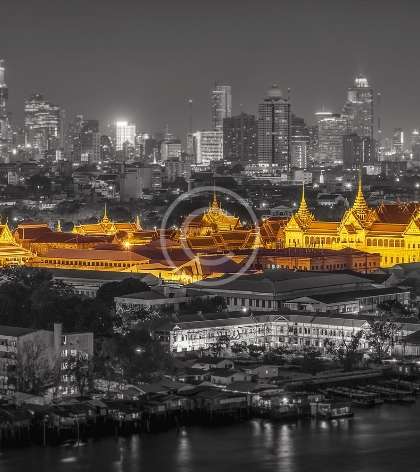Share This Article

Clothes are much more than the outer shell we use to keep the outside world away. A shirt, a pair of pants or a stylish jacket is a form of self-expression, a part of your personality that is shown to others in a coded, material form. The fabric, color, length and style of your clothes say more about you than any other feature of your body and they are essential to your appearance.
Social Class
Ever since mankind decided to cover up its privates, clothing has had distinct roles and functions. Among the first was that of determining social class. With newly obtained power and wealth, a different wardrobe was available to the individual. Rugged, plain clothes were replaced by luscious silk and cotton, not to mention the explosion of color that went along with them. The differences among rank were thus easily recognizable through clothing alone.
While clothes no longer imply social class or even wealth to the extent that they did, we still ascribe meaning to them. For example, the white lab coat is tightly associated by our brains with doctors and the sense of responsibility and security they give us. From the muddy green, sturdy pants that we associate with armed forces to the quality cotton turkish towels that make us think of comfort, one could say that the history of what people wore is the history of man.
As such, you might not realize your status as a continuator of an age-old feeling whenever you linger in front of the mirror, deciding what to wear. That same feeling was probably known to every man, woman or teenager that ever existed, no matter their limited choice.
Self-Expression
It was the modern fashion industry that professionalized style preferences in matters of clothing. Nowadays, trends are set by the industry’s experts according to a series of factors that we don’t even consider whenever we pick our clothes from the closet. Designing clothes has easily reached the status of art, with wondrous and extravagant additions that challenge the imagination.
Apart from providing guidance to the general population, the fashion industry took a life of its own, reaching new heights in terms of self-expression.

Setting Patterns
However, your own choice in terms of clothes can be appropriately studied and documented from a behavioral standpoint. Spending patterns are especially relevant when looking at the clothing preferences of people. Bright colors, for one, can be associated with an outgoing and extroverted personality. Conversely, the ever-darker clothes worn by teenagers can be linked to a rebellious attitude or a particular taste in music.
The matter becomes further complicated by adding roles and settings to the mix. As we all know, some clothes are appropriate for some occasions while others simply are not. This fact goes beyond practical reasons that would, for one, advise against wearing a suit to a baseball game. Simply put, one can “dress to impress” or dress to relax.
Daily Roles
We also change our clothes according to the roles we fulfill daily. For example, a doctor can also be a mother, the lab coat thus giving way to warm colors and a softer fabric. In the same way, a construction worker can also be taking night classes to advance his career, putting on a youthful shirt and exuding the curiosity specific to students.
Therefore, we could say that displaying status is still a primary function of clothes. Except nowadays you can easily swap between the manifold roles and the statuses they presume, changing your attire appropriately.
Clothes have meaning, whether we are aware of it when we pick them out from the back of our closets or not. Moods can also weigh in on our usual style. The gloomy and rainy autumn days, for example, can hardly be fitted together with a screaming bright red dress or a lavish yellow scarf. The same clothes, however, are perfect for a warm summer evening.
Whenever you pick out a piece of clothing, you do so according to a series of personal and contextual factors. The process has become so common to your brain that you hardly stop to consider it thoroughly. However, it’s clear that clothes say more about you than you might actually know.




